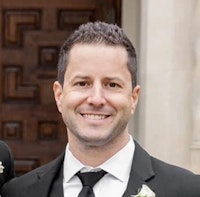- Blog
- Company news
- Building with the Content Editor in Mind

Tony Spiro
August 23, 2016

In this article I'm going to show you some basic ways to structure content for your websites that make content very easy to manage on the backend. When you start with an easy-to-use CMS and structure your content intuitively, your content editor will be able to quickly and easily navigate through the CMS to edit content and will ultimately sing your praises.
Let's first look at a standard website layout. For 99% of all websites you have the standard structure of Header, Main Content and Footer and it looks something like this:

When I look at the page layout above and consider how it will be managed in the CMS, I immediately translate this into two different object types: Global (items on all pages like the Header and Footer) and Page (Main Content). In the Cosmic backend it will look something like this:

This is set up in a way that allows for easy communication with your content editor on how to edit the content on the pages of the website. If they are looking to edit a page, they go into Pages. If they need to edit anything that is repeated across the entire website, they go into Globals. For the developer, there's an easy way to scale Global items that will be reused across the site like logo, navigation, social links, etc.
Now let's say we want to add a hero image on the top of each page on the website.

Cosmic makes this really easy to do by using metafields. To add a new metafield to all of our new and existing pages, we will go into our Object Type settings for our Pages and add an image metafield for hero.

Now each Page will have the image metafield hero available:

Let's say we also wanted to add the company's social links to Facebook, Twitter and LinkedIn. This is really easy. All we need to do is add a new Socials object in Globals and each social link will have its own text metafield. It would look something like this:

As you can see, Cosmic makes it really easy to give your content editor the easiest and most intuitive content editing experience. I hope you found these basic examples useful in getting started with user-first content development using Cosmic. If you have any questions about how to further structure your content for easy handoff to content editors, please join our Slack channel, or reach out to us on Twitter.
Continue Learning
Ready to get started?
Build your next project with Cosmic and start creating content faster.
No credit card required • 75,000+ developers



